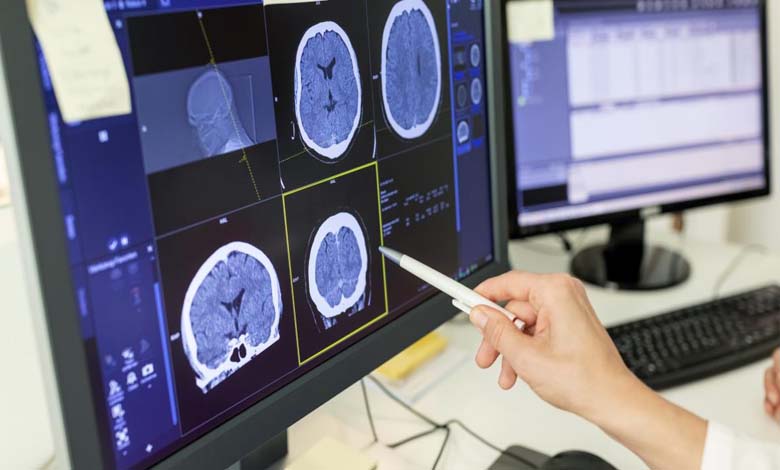The Man Who Lives with Only 10% of His Brain… A Mystery That Puzzles Scientists

In a rare and astonishing scientific phenomenon that has captivated researchers around the globe, a French man has been able to lead an almost normal life despite the loss of 90% of his brain. This extraordinary case, which was revealed in a medical study published by The Lancet, has ignited a firestorm of questions about the functioning of the human brain and its astonishing capacity for adaptation.
The man, now in his forties, showed no visible cognitive impairments. He was married with two children, had a stable job as a civil servant, and led a seemingly normal life. His everyday interactions, from work to family life, were indistinguishable from those of any other individual. Remarkably, he did not know that his brain was almost entirely void of tissue until he sought medical attention for a mild weakness in his left leg.
The story of his discovery is as unusual as his condition itself. The man’s doctors ordered an MRI to investigate the cause of his leg weakness. What they found on the scan shocked them all: the majority of his brain was missing, leaving behind only a thin layer of neurons clinging to the inside of his skull. This revelation would leave anyone in disbelief, as it contradicted everything scientists thought they knew about the brain’s role in human behavior, cognition, and consciousness.
-
Boosts Brain Health.. 7 Health Benefits That Will Make You Want to Eat Spinach
-
Beware… “Overthinking” Harms the Brain with “Severe Consequences”
How Can a Person Live Without Most of Their Brain?
The question on everyone’s mind is, how can a person survive with so little brain matter? It turns out that the man had been suffering from a condition known as hydrocephalus since childhood. Hydrocephalus is a disorder in which cerebrospinal fluid (CSF) accumulates in the brain’s cavities, causing increased pressure on the brain tissue. This condition is often associated with neurological problems and developmental delays, but in this man’s case, it progressed over decades in such a way that it gradually eroded most of his brain tissue.
The fluid buildup, over time, had caused the brain to shrink. As the pressure continued to build, it squeezed out much of the brain’s substance, leaving only a thin layer of neurons near the outermost parts of the skull. Despite this, the man’s condition remained undiagnosed for most of his life, and he continued to lead a normal existence. His cognitive abilities, from reasoning and memory to speech and motor function, appeared unaffected, even though the MRI scan revealed that the vast majority of his brain was nonfunctional.
-
After being implanted in a patient’s brain… Elon Musk’s Neuralink chip faces a problem
-
Study: “Poverty” Accelerates Brain Aging
The Brain’s Amazing Ability to Adapt
This remarkable case has led to a new understanding of how the brain functions and adapts to extreme conditions. For decades, scientists believed that the brain required all of its regions to work in harmony to maintain mental and physical functioning. It was assumed that the loss of a significant portion of brain tissue would result in severe cognitive deficits, personality changes, and a host of other neurological impairments.
However, the case of this French man challenges that notion and provides powerful evidence for the concept of neuroplasticity—the brain’s ability to reorganize itself in response to damage or injury. Neuroplasticity refers to the brain’s remarkable ability to reassign tasks and functions that would typically be performed by one area to other, healthier regions of the brain. In this case, it seems that the man’s remaining neurons took over the functions that would normally require a much larger and more complex neural network.
-
Is Forgetfulness Healthy for the Brain?
-
Development of a test to detect brain cancer… The First and Fastest in the World
This discovery is not only groundbreaking in terms of our understanding of the brain’s adaptability, but it also raises fundamental questions about the minimum amount of brain matter required to sustain consciousness, cognition, and intelligence. While traditional views have often linked intelligence to brain size and the density of neural connections, this case demonstrates that cognitive functions can remain intact, even with a massive loss of brain tissue. It suggests that the brain is far more resilient and flexible than previously thought.
The Mysteries of the Human Brain: What We Still Don’t Know
While this case is extraordinary and rare, it brings us one step closer to understanding the incredible complexity of the human brain. For centuries, scientists have been working to decode the brain’s inner workings, but there is still much to learn. We now know that the brain is not as rigid and inflexible as once believed, but rather an organ that can adapt and compensate in ways that defy our current understanding of neuroscience.
-
Russian doctors find needle in woman’s brain after 80 years
-
5 mistakes not to make to keep your brain healthy
This phenomenon is particularly fascinating because it challenges long-held assumptions about brain function and consciousness. It raises questions about the brain’s inherent flexibility and the extent to which it can reorganize and repurpose itself in response to structural damage. This man’s case demonstrates that the brain may possess a level of redundancy and adaptability that allows individuals to lead relatively normal lives even in the face of extreme neurological damage.
The implications of this discovery could extend beyond simply understanding how the brain functions in health and disease. It could have profound implications for the treatment of brain injuries, degenerative conditions such as Alzheimer’s disease, and other neurological disorders. If the brain can adapt in such a dramatic way to loss of tissue, it raises the possibility that future treatments could harness the brain’s neuroplasticity to help individuals recover from traumatic brain injuries or progressive diseases.
-
A new tracer to track Cholesterol in the brain
-
Brain: the trick to “delete” information from your memory
The Potential for New Neuroscience Treatments and Technologies
This discovery opens up new avenues for research into how neuroplasticity can be harnessed to improve treatments for various neurological conditions. In particular, scientists are exploring how therapies could stimulate the brain to rewire itself after injury or disease. It is possible that, with the right interventions, patients with brain injuries or neurodegenerative diseases could be helped to regain lost cognitive abilities, or at the very least, to maintain a higher quality of life than previously thought possible.
Currently, neuroplasticity is being studied in a range of contexts, from stroke rehabilitation to the treatment of autism spectrum disorders. The ability of the brain to reorganize itself is already being utilized in physical therapy and cognitive rehabilitation, where patients are encouraged to perform specific tasks that help retrain neural pathways. However, this new case demonstrates that the potential for neuroplasticity may be even greater than we ever imagined.
Future research could focus on developing treatments or therapies that encourage the brain to create new neural connections or even reassign lost functions to other areas of the brain. This could have a significant impact on the way we treat brain injuries, dementia, and other neurological conditions, and could revolutionize how we think about brain health and recovery.
Implications for Our Understanding of Intelligence and Consciousness
The man’s ability to live a fully functional life despite the loss of 90% of his brain tissue challenges our understanding of intelligence and consciousness itself. What defines a person’s cognitive abilities? Is it the size and complexity of the brain, or is it the brain’s ability to adapt and reorganize in response to challenges?
-
Study: Controlling Blood Pressure Protects Against Dementia
-
Groundbreaking Study: Reducing Midlife Fat Improves Memory and Lowers Dementia Risk
This case suggests that intelligence may not be as closely tied to brain size as we once thought. Instead, it may depend more on how efficiently the brain can process and integrate information. This could lead to a rethinking of traditional measures of intelligence, such as IQ, and may prompt new ways of evaluating brain function that take into account the brain’s capacity for adaptability and resilience.
Moreover, this discovery has profound implications for how we think about consciousness. If a person can maintain cognitive functions despite losing the vast majority of their brain, what does that say about the nature of self-awareness and consciousness? It raises questions about the essential ingredients of consciousness and whether they are solely dependent on the brain’s physical structure or whether other factors, such as the brain’s ability to adapt, play a crucial role.
-
Misdiagnosis of Chronic Diseases Causes Permanent Damage
-
This Habit Helps Keep Alzheimer’s Symptoms Under Control
Conclusion: A Remarkable Case that Redefines Our Understanding of the Human Brain
The case of the French man who has managed to lead a normal life despite losing 90% of his brain tissue is a landmark discovery in the field of neuroscience. It provides compelling evidence for the power of neuroplasticity and challenges our long-held assumptions about the brain’s role in cognition, intelligence, and consciousness. While this case is rare, it opens up new possibilities for understanding how the brain can adapt to extreme conditions and offers hope for the future of treating brain injuries and neurodegenerative diseases. The brain, it seems, is far more resilient and adaptable than we ever imagined, and this discovery is just the beginning of uncovering its full potential.
-
A “Strange Habit” Related to the Refrigerator May Be a Warning Sign of Dementia
-
Lack of Sleep in Middle Age Increases the Risk of Dementia












